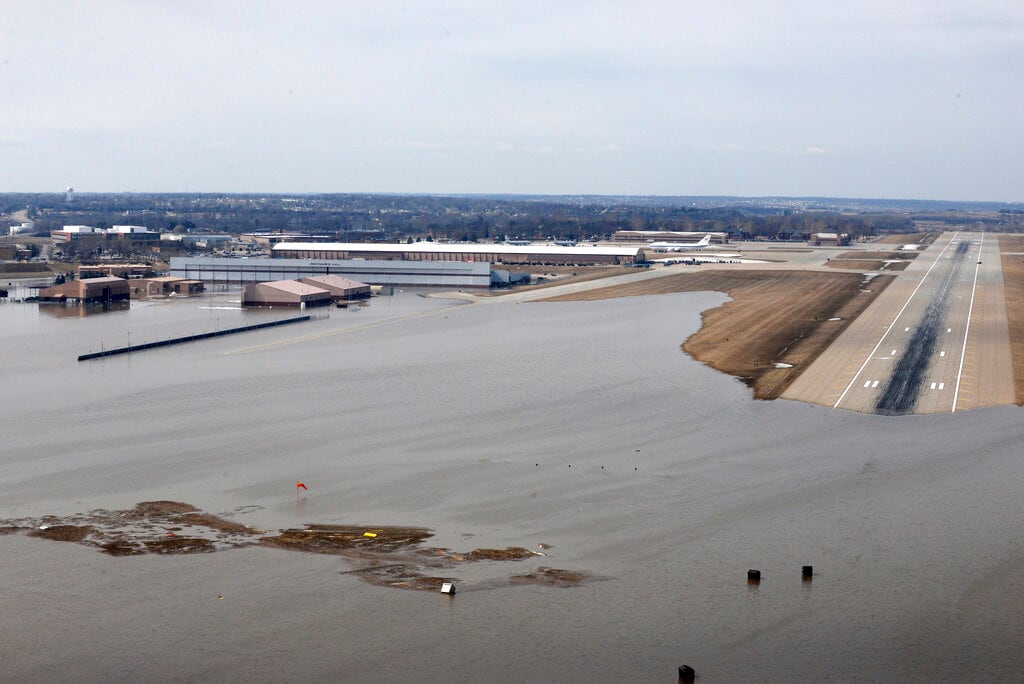About 2,800 troops suffered illnesses from dehydration to heat stroke last year. That number is 50 percent higher than it was five years earlier, according to a study published Monday, and will only get worse as global temperatures continue to rise.
The military’s hottest bases clock in at Marine Corps Air Station Yuma, Arizona, MacDill Air Force Base, Florida, and Homestead Air Reserve Base, Florida, according to the Union of Concerned Scientists, and they could be staring down four months a year where the heat index tops 100 degrees.
“The growing number of dangerously hot days could pose a challenge to the military’s efforts to protect service members’ health while also ensuring mission readiness,” Kristy Daul, the study’s lead author, said in a Monday news release.
The study defines “extreme heat” as a heat index ― the combined actual air temperature with humidity, which increases the intensity of the heat and the “feels like” temperature ― of over 100 degrees.
“Under this scenario, carbon emissions would continue to rise and the global average temperature would increase about 8 degrees Fahrenheit (4.3 degrees Celsius) above pre-industrial levels by century’s end,” according to the release.
While any service members working or training outside are at risk, the study found that basic trainees are the most at risk ― according to statistics, young service members are most at risk for heat casualty, as well as African-American or of Asian/Pacific Islander descent.
Most of the heat injuries between 2014 and 2018 happened at Fort Benning, Georgia, home of the Army’s infantry and armor basic training units, as well as Airborne and Ranger schools, where trainees are regularly allowed to blow off uniform regulations by keeping their pants un-bloused and the cuffs of their blouses open to allow more airflow.
Right now, the researchers found, the post sees more than 16 days a year with a heat index over 100. Their model, based on the observed increases in super-hot days over recent year, found that Benning could see 73 100-plus days by mid-century.
RELATED

Fort Bragg, North Carolina, Camp Lejeune, North Carolina, and Fort Campbell, Kentucky, are the next in line with the most heat illnesses, according to the study, and could see up to two months of 100-plus days a year, another quadrupling from the roughly 11 days they have now.
The study cites a paper by the Armed Forces Health Surveillance Branch, published in April, which found that despite preventive measures ― like modified uniform wear, or dunking troops’ forearms in ice baths to cool down on hot days ― "heat-related illness remains a significant threat to the health and operational effectiveness of military members and their units and accounts for considerable morbidity, particularly during recruit training in the U.S. military.”
In a press release issued in July, Fort Benning laid out a handful of precautions to take on hot days, including drinking water, avoiding sugary or caffeinated drinks and using the ice baths set up in training areas.
“It’s therefore critically important to be aware of your body and not put your life on the finish line,” Maj. Scott H. Robinson, the head of preventive medicine at Martin Army Community Hospital, said in the release. “The key things to remember are: be aware of the climate conditions, hydration starts the day before, and be aware of yourself and your buddy.”
Lackland Air Force Base, Texas, the Air Force’s initial training center, as well as the Marine Corps’ Parris Island, South Carolina, boot camp are also at risk for significant increases in hot days, according to the UCS study, along with Fort Sill, Oklahoma, where the Army trains its artillery soldiers.
“Last year, drills had to be rescheduled because of dangerous heat conditions,” study co-author Shana Udvardy said in the release. "But how do you reschedule around the entire summer in the decades ahead?”
Naval Air Stations Pensacola and Joint Reserve Base New Orleans are also at risk of having more than two months of extremely hot days every year.
“The military has guidelines in place for preventing heat-related illness, but it’s still seeing an increase in service members getting sick,” Udvardy said. “These guidelines may need to be updated to reflect growing risks and must be diligently enforced especially during extreme heat days. Adjustments may have to be made in the times of day or year when it’s safe for soldiers to train outdoors.
Beyond heat, studies have also shown that waterfront military bases are an increased risk for flooding due to climate change.
A 2016 UCA study warned that 18 Navy bases could face hundreds of floods yearly, and in some cases be completely submeged by 2100.
“DoD values the UCS’s insights into the impacts of climate change on military installations,” Air Force Lt. Col. Eric Badger told Navy Times. in 2016 “We welcome their report and its findings. We recognize climate change impacts and their potential threats represent one more risk that we must consider as we make decisions about our installations, infrastructure, weapons systems and most of all, our people.”
Meghann Myers is the Pentagon bureau chief at Military Times. She covers operations, policy, personnel, leadership and other issues affecting service members.





